You’ll maximize your athletic performance by tracking your menstrual cycle phases through your wearable. Schedule high-intensity workouts during your follicular phase when estrogen peaks and energy soars. Monitor your heart rate variability—it’s highest during follicular phase, signaling readiness for demanding training. Track basal body temperature to predict performance windows, as lower temps indicate peak training potential. Prioritize recovery during your luteal phase when progesterone rises. Adjust training intensity based on sleep quality metrics, and create cycle-aware fitness challenges that sync with your natural hormonal rhythms for best results.
Understanding Your Cycle Phases and Energy Levels
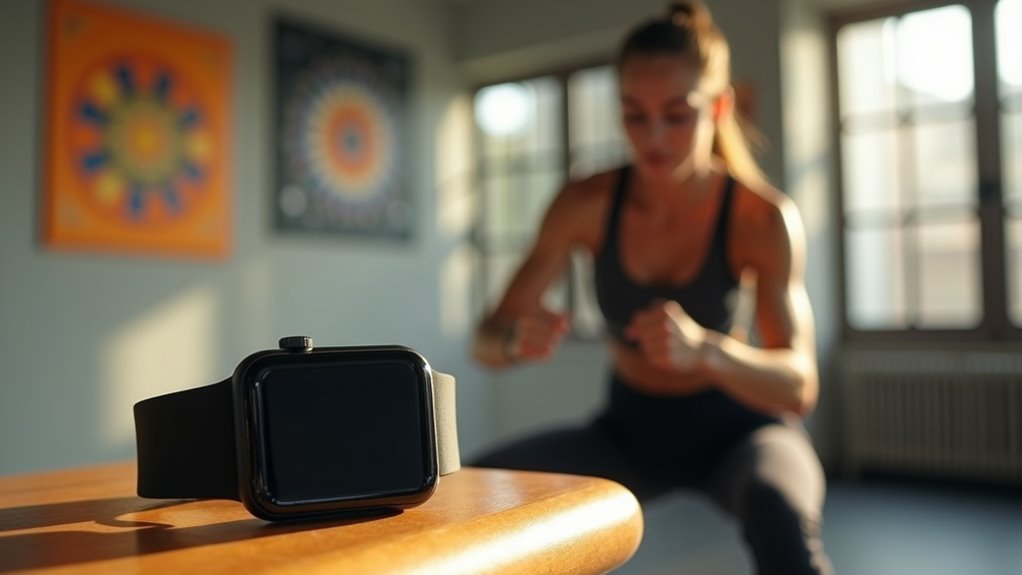
As your cycle progresses through its distinct phases, your energy levels naturally fluctuate in response to changing estrogen and progesterone levels.
During menstruation, you’ll experience your lowest energy when both hormones drop considerably.
Your energy reaches its lowest point during menstruation as both estrogen and progesterone levels drop significantly.
The follicular phase brings renewed energy as estrogen rises, improving your mood and boosting energy levels. This phase typically lasts about 14 days as your ovaries prepare an egg for ovulation.
You’ll hit your peak during ovulation when estrogen reaches its highest point, making this your most energetic time.
The luteal phase marks a gradual decline as progesterone’s influence increases, causing some fatigue while energy remains higher than during menstruation.
Understanding these predictable patterns helps you anticipate when you’ll feel strongest and when you’ll need gentler approaches to training.
Optimizing Workout Intensity Based on Hormonal Fluctuations
While your energy levels provide valuable clues about when to push harder or ease up, your cycle-tracking wearable reveals the deeper hormonal story that should guide your workout intensity decisions.
During your follicular phase, elevated estrogen enhances muscle protein synthesis and neuromuscular efficiency, making this ideal for high-intensity strength training and HIIT workouts. Your body’s improved lipid oxidation also supports longer endurance sessions. This phase also provides easier access to stored carbohydrates for fuel.
When you enter the luteal phase, rising progesterone creates a more catabolic environment and increases core temperature. You’ll likely notice higher perceived exertion and faster fatigue onset.
Scale back intensity during this time—opt for moderate workouts and longer recovery periods. Your wearable’s cycle data helps you anticipate these shifts, preventing overtraining while maximizing gains when your hormones are primed for performance.
Leveraging Real-Time Heart Rate Data During Different Cycle Stages
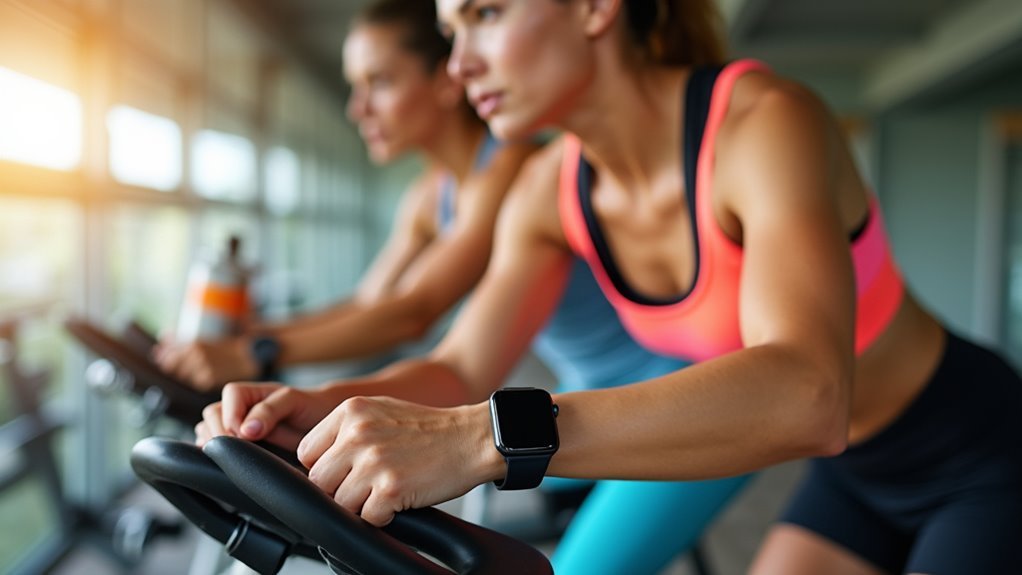
Your wearable doesn’t just track workout intensity—it captures the real-time cardiovascular changes that occur throughout your cycle. You’ll notice your resting heart rate shifts predictably across phases, rising about 2.1 bpm during your fertile window and 3.5 bpm in the luteal phase compared to menstruation.
| Cycle Phase | Heart Rate Changes | HRV Pattern | Training Implications |
|---|---|---|---|
| Menstrual | Baseline levels | Moderate HRV | Standard intensity acceptable |
| Follicular | Lower resting HR | Highest HRV | Ideal for high-intensity training |
| Ovulatory | +2.1 bpm increase | Declining HRV | Monitor recovery closely |
| Luteal | +3.5 bpm increase | Lowest HRV | Prioritize recovery, reduce load |
Track these patterns to establish your personal baselines. When HRV drops notably during luteal phases, it’s signaling decreased recovery efficiency—use this data to adjust training intensity accordingly. Recent studies using consumer-grade sensors have validated that even affordable wearable technology can accurately detect these minute physiological changes throughout the menstrual cycle.
Setting Personalized Recovery Goals Throughout Your Monthly Cycle
Beyond tracking heart rate fluctuations, your wearable becomes a strategic partner in crafting recovery goals that shift with your hormonal landscape.
During your follicular phase, you’ll receive recommendations for increased training intensity as estrogen rises and energy peaks. When you enter the luteal phase, your device adjusts expectations, prioritizing rest as progesterone climbs and recovery needs intensify.
Your wearable analyzes heart rate variability, skin temperature, and sleep patterns to generate phase-specific coaching. You can log symptoms like cramps or fatigue, helping the device recognize patterns and refine future recommendations. Advanced devices like the Evie Ring provide personalized insights that connect various aspects of women’s health for comprehensive cycle-based training optimization.
Features like WHOOP’s Menstrual Cycle Insights provide tailored guidance on sleep duration, stress management, and ideal strain levels. This continuous data collection creates personalized recovery protocols that evolve with your unique cycle patterns.
Using Temperature Tracking to Predict Performance Windows

Your wearable’s temperature data reveals distinct patterns that shift throughout your monthly cycle, creating predictable windows when training feels easier or harder.
You’ll notice your basal body temperature rises after ovulation due to progesterone, signaling when workouts might require extra effort and hydration. This awareness can help you anticipate and manage fatigue during certain phases, allowing you to adjust your training expectations accordingly.
Temperature Patterns Throughout Cycles
While your wearable device tracks temperature automatically, understanding the underlying patterns can transform raw data into actionable training insights. Your basal body temperature follows predictable phases that directly correlate with your body’s energy and performance capabilities.
During your follicular phase, you’ll notice consistently lower temperatures ranging from 97-98°F, signaling ideal conditions for high-intensity training. After ovulation, expect a sharp 0.4-1°F rise that plateaus throughout your luteal phase. This elevated temperature often coincides with decreased energy levels and increased recovery needs.
- Follicular phase: Lower BBT aligns with peak strength and endurance potential
- Ovulation window: Temperature dip followed by sharp rise within 24-48 hours
- Luteal phase: Elevated plateau may indicate reduced performance capacity
- Pre-menstrual drop: Declining BBT signals upcoming period and potential fatigue
- Pattern recognition: Several cycles needed for reliable training predictions
For accurate pattern recognition, take your temperature immediately upon waking before any movement to ensure consistent measurement times that will reveal your body’s true baseline shifts throughout each cycle phase.
Optimal Performance Temperature Zones
Temperature data from your wearable reveals distinct performance windows that shift predictably throughout your menstrual cycle.
During your follicular phase, when core temperature stays lower, you’ll typically experience peak endurance performance and efficient thermoregulation. This creates ideal conditions for longer, more intense cardio sessions.
Once ovulation occurs, your temperature rises 0.3°C to 0.7°C and remains elevated throughout the luteal phase. This temperature increase signals a narrower performance window where endurance suffers due to increased internal heat load and reduced exercise tolerance.
However, this phase may benefit short-term strength training due to heightened anabolic hormone activity.
Your wearable’s continuous monitoring identifies these thermal patterns, allowing you to predict when your body’s primed for different training types and adjust intensity accordingly. The Temperature Trend View provides valuable insights into long-term patterns that help optimize training across multiple cycles.
Adjusting Workouts Using Data
Understanding these temperature patterns sets the foundation for making smart training decisions with real data.
Your wearable’s basal body temperature tracking reveals when your body’s primed for different workout intensities. After ovulation, you’ll notice a slight temperature rise that can actually enhance short-duration, high-intensity efforts.
Combine your temperature data with menstrual cycle tracking to identify your personal performance windows. When temperatures are stable during the follicular phase, you can tackle demanding workouts with better hydration and energy levels. Research shows that strength training during this phase may yield higher muscle gains compared to other times in your cycle.
During the luteal phase’s elevated temperatures, shift toward lower-intensity training to avoid heat sensitivity issues.
- Track temperature trends for 2-3 cycles before making major training adjustments
- Use digital thermometers or wearable devices for consistent measurements
- Schedule high-intensity workouts during stable temperature periods
- Reduce workout intensity when body temperature peaks
- Consult healthcare professionals for personalized performance strategies
Adjusting Training Load Based on Sleep Quality Metrics
Although sleep might seem like passive recovery time, your wearable’s sleep quality metrics provide essential data for enhancing your training load. Heart Rate Variability (HRV) serves as your primary recovery indicator—higher HRV signals you’re ready for intense training, while lower HRV suggests reducing intensity.
Devices like WHOOP 4.0 and Oura Ring 4 track sleep stages, helping you understand when you’ve achieved adequate deep sleep for recovery.
Monitor sleep efficiency and latency alongside respiratory rate and skin temperature changes, which reveal stress levels affecting recovery. Use smart alarms to wake during ideal sleep cycles, reducing grogginess and enhancing performance.
When your metrics show poor sleep quality, scale back training intensity and prioritize recovery. The Whoop 5.0 delivers 99.7% accuracy in heart rate measurement, ensuring your recovery decisions are based on reliable biometric data. Consistent tracking reveals patterns, allowing you to adjust workouts proactively rather than reactively.
Creating Cycle-Aware Fitness Challenges and Milestone Tracking
Your cycle-tracking wearable transforms how you approach fitness challenges by aligning them with your body’s natural hormonal rhythms.
You can design phase-specific challenges that capitalize on your energy peaks during ovulation while honoring your body’s need for gentler movement during menstruation.
Setting hormone-informed milestones means you’ll celebrate achievements that reflect your cycle’s reality rather than fighting against your biology. During the luteal phase, allow for longer recovery times between intense workouts as your body naturally requires more rest to restore itself.
Cycle-Based Challenge Design
When traditional fitness challenges ignore your menstrual cycle, they’re setting you up for frustration and potential burnout.
Cycle-based challenge design works with your body’s natural rhythms instead of against them. Your wearable’s cycle data enables smart challenge customization that adapts to hormonal fluctuations.
During your follicular phase, you’ll tackle high-intensity strength training. The ovulatory phase becomes perfect for challenging cardio sessions when energy peaks. Your luteal phase shifts focus to moderate workouts and flexibility training.
Key elements of effective cycle-based challenges include:
- Variable intensity levels that match your energy fluctuations
- Flexible start dates aligned with your personal cycle timing
- Recovery-focused milestones during low-energy phases
- Phase-specific workout recommendations based on hormonal changes
- Injury prevention protocols for vulnerable cycle periods
This approach transforms fitness challenges from rigid schedules into personalized, sustainable programs. Understanding individual cycle responses helps create truly effective challenges since personal experiences during the menstrual cycle vary widely among different people.
Hormone-Informed Milestone Setting
Building on these adaptable challenge frameworks, hormone-informed milestone setting takes personalization to the next level by leveraging your body’s biochemical fluctuations.
Your cycle-tracking wearable provides essential data on estrogen, progesterone, testosterone, and cortisol levels that directly impact your strength, endurance, and recovery capacity.
Instead of setting rigid performance targets, you’ll create dynamic milestones that sync with your hormonal patterns. During your follicular phase when estrogen rises, you might target strength gains. When progesterone dominates your luteal phase, focus on recovery-based goals.
Your wearable’s real-time hormone monitoring helps you identify ideal training windows and necessary rest periods. This approach reduces overtraining risk while maximizing your body’s natural capabilities, creating sustainable progress that works with your physiology rather than against it. Monitoring your testosterone:cortisol ratio helps identify when training volume needs adjustment, as a significant drop of 30% or more may signal inadequate recovery and require immediate program modifications.
Frequently Asked Questions
Can I Share My Cycle-Tracking Data With My Personal Trainer or Coach?
You can share cycle-tracking data with your trainer, but consider privacy risks first. Use manual reporting, choose privacy-focused apps, or guarantee your current app has strong encryption and data protection measures.
How Do I Sync My Wearable Data With Other Fitness Apps?
You can sync wearable data through API connections, third-party platforms like FitnessSyncer, or built-in integrations with Apple HealthKit or Google Fit, depending on your device’s compatibility.
What Should I Do if My Wearable Gives Inaccurate Cycle Predictions?
Cross-reference your wearable’s predictions with manual tracking methods like basal body temperature. Provide feedback to correct inaccuracies, update your app regularly, and consider combining multiple physiological data sources for better accuracy.
Are There Privacy Concerns When Using Cycle-Tracking Features on Wearables?
Yes, there are significant privacy concerns. Your wearable continuously collects intimate health data that’s often shared with third parties, stored in the cloud, and potentially accessible to law enforcement or researchers without clear consent.
How Long Does It Take for the Device to Learn My Patterns?
Your device typically needs 2-3 menstrual cycles to learn your unique patterns accurately. You’ll see improved predictions as it collects more data, but consistency in wearing and syncing accelerates the learning process considerably.

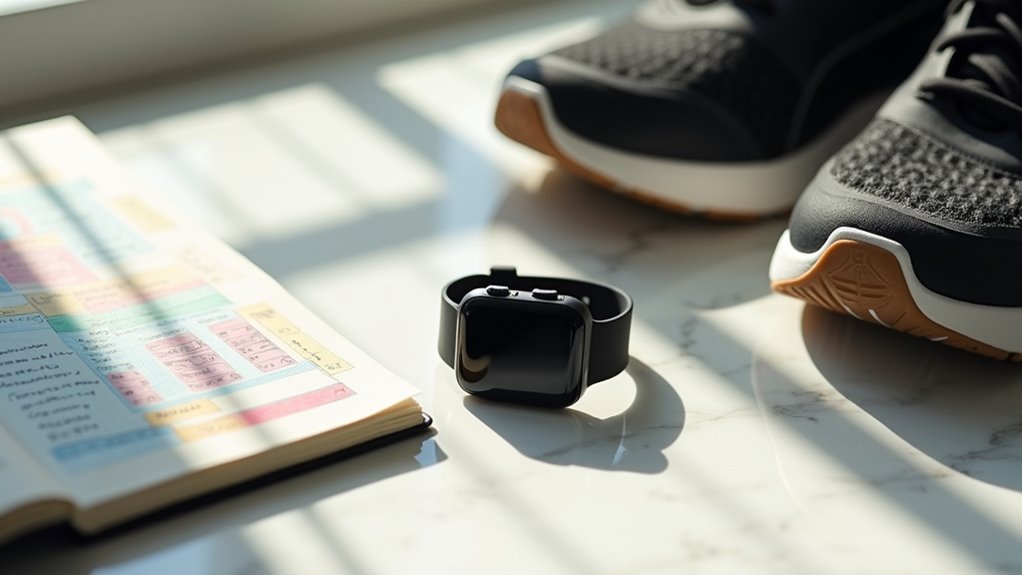
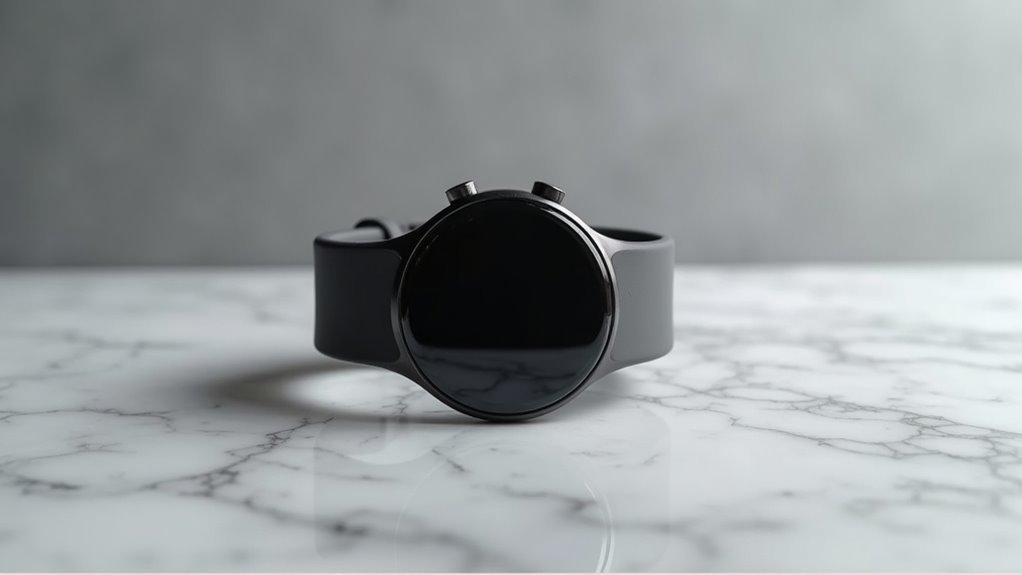
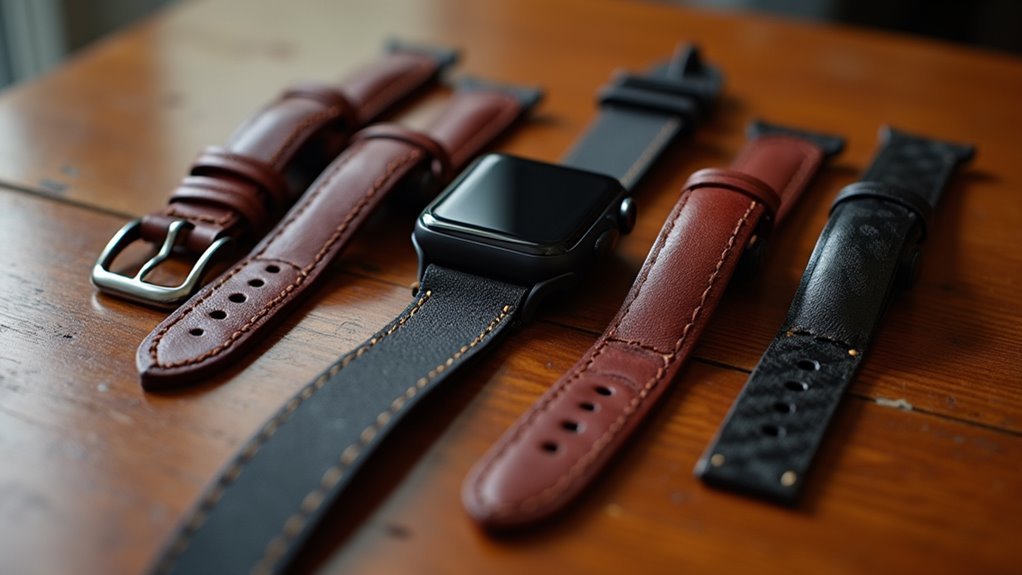
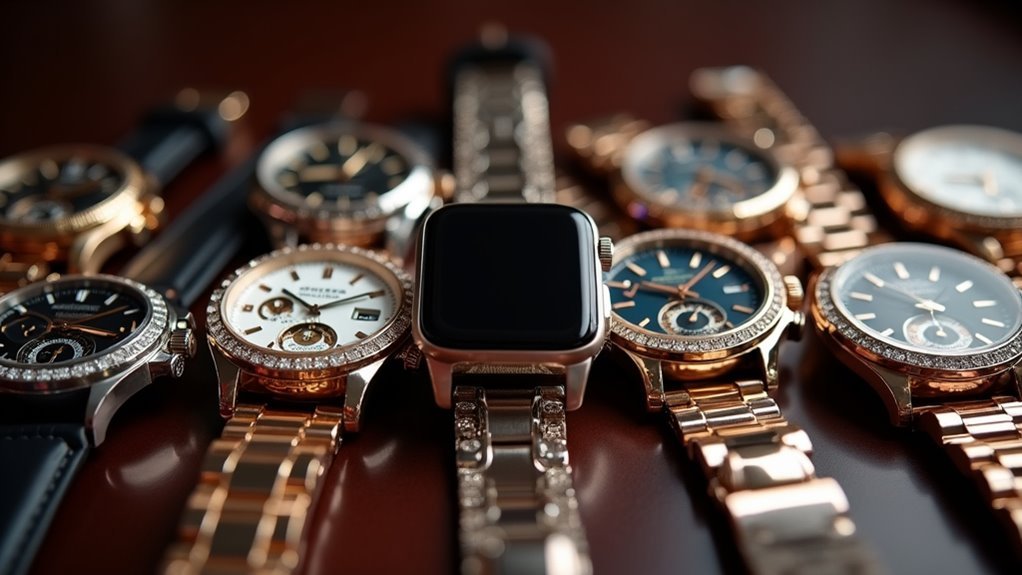
Leave a Reply